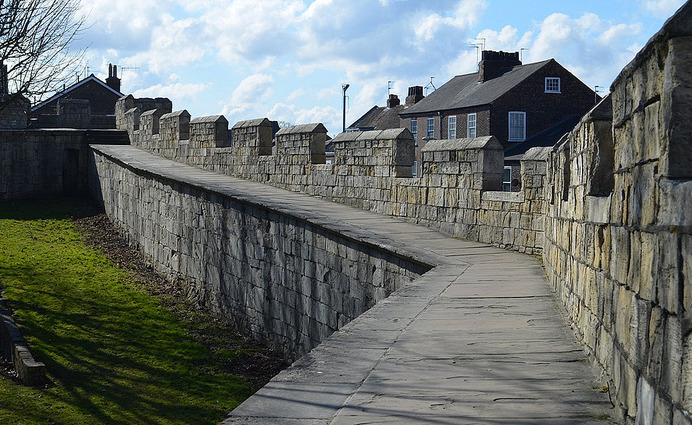The City Walls
Security in the City

The historic city walls encircle the core of the city.
Most of the present walls are medieval, from 12th-14th century.
York's first city walls were built in Roman times, however, from about 71AD, around the military camp (where the Minster now stands). Only a few fragments of these remain, such as the Multangular Tower in Museum Gardens.
The various stages of wall building through the ages are shown and labelled on the walls behind the library. There, the lower wall with a row of red tiles is Roman, the bricks still in crisp new condition because it was buried until the 1970s.
The city walls are not uninterrupted. Some parts were restored (or demolished!) in the 19th century. And the stretch near Clifford's Tower was never built, because at the time the castle moat and surrounding swamps made an effective barrier. Similarly, swamps (long since drained) by the River Foss meant that there are no walls needed for part of what is now Foss Islands Road.